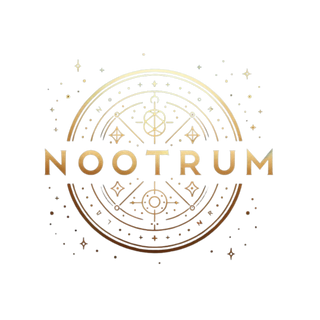Най-известното предимство на гъбата Lion's Mane е нейната способност да подобрява когнитивната функция, което по дефиниция всъщност би направило Lion's Mane ноотропно средство, но като повечето неща не е толкова просто. Простото приемане на генерична добавка Lion's Mane често няма да направи нищо, за да увеличи мозъчната ви сила. И има една добра причина за това. И това е фактът, че търсим едно специфично съединение и то съставлява само 0,27% от гъбата и идва от мицела, въпреки факта, че много производители ще популяризират конкретно плодното тяло, но ние ще говорете повече за това защо е така по-късно.
Кои съединения в Lion's Mane са ноотропни?
В Lion's Mane има множество съединения и когато търсим неговите стимулиращи мозъка ефекти, ние търсим най-вече еринацините. Има други съединения в гъбата от лъвска грива, които наистина имат невропротективни ефекти и дори има още едно съединение, което може да стимулира мозъчния NGF (фактор на растеж на нервите), но еринацините са основното нещо, което търсим, тъй като те са най-ефективни при преминаване на кръвно-мозъчната бариера. С други думи означава, че действително стигат до мястото, където трябва да отидат. И от всички еринацини повечето от проучванията, които имаме, са направени върху еринацин А.
Хериценоните са другото съединение, за което е доказано, че повишава NGF, и те наистина идват от плодното тяло, първоначално в проучванията в епруветка те изглеждаха най-ефективни, но когато се стигна до поведението им в човешкото тяло, молекулата е твърде голяма, за да стигат ефективно до мозъка и в резултат на това е доказано, че еринацин А е много по-ефективен.
Какво всъщност означава повишаването на NGF с Lion's Mane?
Увеличаването на фактора за растеж на нервите (NGF) означава повишаване на нивата на протеин, който помага за растежа, възстановяването и защитата на нервните клетки. NGF е от решаващо значение за здравето на мозъка и нервите, тъй като поддържа оцеляването на невроните, възстановява увредените нервни влакна и укрепва връзките между тях. Този процес, наречен невропластичност, е от съществено значение за ученето, паметта и адаптирането към нова информация. Чрез насърчаване на защитната миелинова обвивка около нервите и намаляване на клетъчната смърт, по-високите нива на NGF могат също да предпазят от невродегенеративни състояния като Алцхаймер или Паркинсон.
Когато NGF се подсили, той може да подобри фокуса, паметта и цялостната мозъчна функция, като същевременно подпомага възстановяването от наранявания на нервите. Известно е, че природни съединения като еринацини от гъбата лъвска грива, редовните упражнения и добрият сън повишават NGF. Учените също така изследват как NGF може да лекува увреждане на нервите и да забави когнитивния спад.
И така, колко еринацини са ви необходими за пълна доза Lion's Mane?
Обикновено ще ви трябват 5 mg еринацин от Lion's Mane, за да получите уникалните ефекти в ниския край, но имайте предвид, че стандартен екстракт от лъвска грива 10:1 ще доведе до 0,5 -2 mg еринацин на 1000 mg (приблизително 1 голяма капсула ). Това предполага, че имаме пълен спектър и висококачествени гъби като начало. И да сме щедри по отношение на процента на гъбата, която съдържа това съединение. Което, разбира се, е причината, поради която трябва да стандартизирате специално за това съединение.
Какво ще кажете за другите съединения в лъвската грива?
Както споменахме преди, лъвската грива съдържа други съединения, които могат да допринесат за здравето на мозъка, те просто не са уникални и не са толкова мощни. Най-известните от тях са бета глюканите. Бета глюканите са полизахарид, който има антиоксидантен ефект и спомага за укрепване на имунната система. Също така ще видите, че повечето по-евтини добавки от гъби стандартизират. Сега, той все още е страхотен за вас и ние стандартизираме нашите добавки, за да сме сигурни, че получавате пълна доза от това заедно с еринацините, но това е често срещано сред гъбите като цяло, не само при лъвската грива.
Друга ключова група съединения са терпеноидите , които допринасят за невропротективните свойства на Лъвската грива. Тези биоактивни молекули помагат за модулирането на невротрансмитерите, подобряват синаптичната пластичност и подпомагат възстановяването на увредени неврони. Но има и други гъби, които са по-богати на тези съединения.
Освен това, фенолните съединения в Lion's Mane действат като антиоксиданти и могат да предпазят от неврална дегенерация чрез неутрализиране на вредните свободни радикали в мозъка. Но още веднъж, те не са уникални и са допълнителна полза, а не звездата на шоуто.
Как да изберем добрите гъби лъвска грива за здравето на мозъка?
Разбира се, ще искате да се уверите, че са стандартизирани за еринацини, което означава, че ще имате нужда от нещо с мицел и ако дадена марка казва, че плодните тела винаги са най-добри, внимавайте. Въпреки че е вярно за повечето гъби, че плодните тела са мястото, където повечето от добрите неща, ако бъдат намерени, случаят не е такъв тук.
Ето откъде идва получената мъдрост, това и фактът, че това е най-доброто място за получаване на бета глюкани, които са по-евтини за стандартизиране. И до последните години бяха това, което повечето хора търсеха.
И въпреки че винаги можете просто да закупите нашите добавки с лъвска грива , ако се интересувате от друга марка, има няколко други неща, за които да внимавате.
Първо, тинктурите не работят много добре с лъвска грива, тъй като еринацините се разграждат в алкохол над 20%, а повечето тинктури са 22%.
Второ, избягвайте по-евтини марки, които са фокусирани върху бета глюкани, и не забравяйте, че екстракт 10:1 не означава, че получавате достатъчно.
Имайте предвид, че дъвките наистина се борят да си набавят достатъчно еринацин и в крайна сметка получаването на подходяща стандартизирана добавка с лъвска грива няма да е евтино. Доколкото знаем, в момента сме най-евтините на пазара за това.
И накрая, ако търсите решение, вземането на по-голяма порция и избора на прах с 5 грама лъвска грива на порция може да бъде начин да заобиколите проблемите със стандартизацията. Все още не е перфектно, разбира се, но увеличава шансовете да получите ноотропните ползи от лъвската грива.

